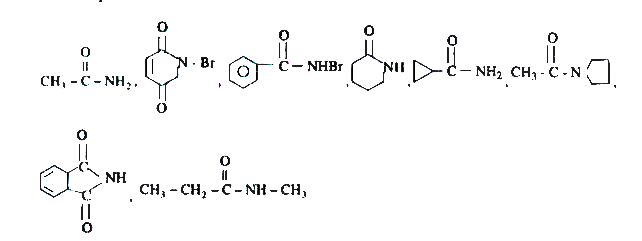The end product (B) formed in the reaction sequence. Glucose HCN−−−→H3O−AHI,P−−−→ΔB.Solution in Telugu
Hexanoic acid
hexane
heptane
heptanoic acid
The correct Answer is:C
Step by step video, text & image solution for The end product (B) formed in the reaction sequence. Glucose underset(H_(3)O^(-))overset(HCN)rarr A underset(Delta)overset(HI, P)rarr B. by Chemistry experts to help you in doubts & scoring excellent marks in Class 12 exams.
Updated on:21/07/2023Topper's Solved these Questions
- CARBOHYDRATESBOOK - AAKASH SERIESCHAPTER - CARBOHYDRATESEXERCISE - Level -II Lecture Sheet (Exercise-I)
20 Videos
- CARBOHYDRATESBOOK - AAKASH SERIESCHAPTER - CARBOHYDRATESEXERCISE - Level -II Lecture Sheet (Exercise-II)
5 Videos
- BIOMOLECULESBOOK - AAKASH SERIESCHAPTER - BIOMOLECULESEXERCISE - OBJECTIVE EXERCISE-4 (ASSERTION (A) & REASON (R) TYPE QUESTIONS :)
84 Videos
- CARBOXYLIC ACIDS BOOK - AAKASH SERIESCHAPTER - CARBOXYLIC ACIDS EXERCISE - PRACTICE SHEET-4 (Integer Type Questions)
9 Videos
Similar Questions
Which molecule possess the general formula of carbohydrates, but is not a carbohydrate?
View SolutionA compound (X) C6H12O6 is oxidised by bromine water into monobasic acid and also reduces Tollens' reagent. It reacts with HCN to give a compound (Y) which on hydrolysis gives a compound (Z).On treating compound (Z) with HI in the presence of red phosphorus n-heptanoic acid is obtained. Compound (X) on treatment with excess phenylhydrazine gave D-glucosazone.
The compound (Y) is
View Solution(A) Fructose has ketone group and does not reduce Tollen's reagent.
(R) Fructose in Haworth structure has SiX membered ring.
View SolutionHow many of the following compounds will give Hoffman Hypo bromide reaction.

View SolutionGlucose underset((i)(P//HI))overset((i)(HCN//H_(3)O^(oplus)))rarr P P is :
View Solution'A'+NaOH→'B'(gas)+'C'Zn−−→'B'
'B'(gas)[O]−−→'D'(gas)Mg−−→Δ'E'(White)H2O−−→'B'(gas)
The gas D and B are respectively?
View SolutionComplete the following sequence of reactions : underset(Delta)overset(P_(2)O_(5))rarr(A)overset(H_(3)O^(+))rarr(B)overset(Br_(2)//P)rarr(C)overset(AgOH)rarr(D)underset(-2H_(2)O)overset(Delta)rarr"Diester" .
View SolutionIn the following sequence of reaction, the end product is :
HC≡CHHg2+/H2SO4−−−−−−−−→(A)CH3MgX−−−−−→[H2O](B)[O]−−→(C)
View Solution(CH3)2CONaCI−−→HCI(A)H+3O−−→Δ(B)
In the above sequence of reactions, (A) and (B) are :
View SolutionIn the reaction sequence CH_(3)-overset(O)overset(||)(C)-H-underset(.^(Θ)OH)overset(HCN)rarr(A) underset(Delta)overset(H_(2)O //overset(o+)(H))rarr Product is/are :
View SolutionIn the reaction
2CH3C∣∣OCH3Base−−→AΔ−−→B the product B is :
View SolutionIn the reaction ,
CH3CHO+HCN→AH+−−−−−→H2OB
The product B is ?
View SolutionGlucose overset(HCN)rarr (X) overset("hydrolysis")rarr (Y) underset(Delta)overset(HI)rarr (A) A is-
View SolutionO3−−−−−→Zn (A) KOH−−−−−→Δ
(B) Major product (B) is :

View SolutionAcetone overset( HCN) ( rarr) ( A) overset( H_(3) O^(+))(rarr) ( B ) . In the above sequence of reaction A and B are :
View Solution